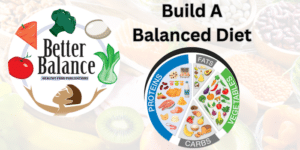
Healthy Diet
Healthy Diet Benefits- Use the Healthy Eating Plate as a guide when preparing nutritious, well-balanced meals, whether they are served at the table or packed for lunch.
Well Balanced Healthy Diet
Make veggies and fruits the bulk of your meal, accounting for 12 per cent of your plate.
Aim for variety and colour, and remember that potatoes do not count as vegetables on the Healthy Eating Plate due to their impact on blood sugar.
Choose 14 percent of your servings to be whole grains
Whole wheat, barley, wheat berries, quinoa, oats, brown rice, and foods containing these grains, such as whole wheat pasta, and refined carbohydrates, like white bread and white rice, have a more moderate influence on blood sugar and insulin.
14 percent of your plate should contain protein
Fish, chicken, beans, and nuts are all excellent sources of protein that may be included into salads and served alongside veggies. Limit your consumption of red meat and avoid processed meats such as bacon and sausage.
Plant oils are advantageous in moderation
Use healthy vegetable oils such as olive, canola, soy, corn, sunflower, peanut, and others instead of partly hydrogenated oils, which contain dangerous trans fats. Remember that “low-fat” does not equate to “healthy.”
Consume coffee, water, or tea
One to two glasses per day of sugary beverages, one to two servings per day of milk and dairy products, and one small glass per day of juice are recommended.
Maintain your activity
The red figure on the placemat of the Healthy Eating Plate serves as a reminder that physical exercise is equally necessary for weight control.
The basic idea of the Healthy Eating Plate is to prioritise diet quality:
Because some carbohydrate sources, such as vegetables (other than potatoes), fruits, whole grains, and legumes, are more healthful than others, the type of carbohydrate in the diet is more essential than its quantity.
The Healthy Eating Plate encourages customers to use healthy oils, but does not prescribe a maximum daily percentage of calories from healthy fats. In this sense, the Healthy Eating Plate promotes the exact opposite of the long-advocated low-fat message espoused by the USDA.
Two macaroni and cheese dishes, one containing 540 calories and the other containing 315 calories.
Balance is essential for a healthy diet. You can still consume your favourite high-calorie, high-fat, and high-added-sugar items. Limiting your intake and balancing it with healthier foods and more physical activity is essential.
Some common suggestions for comfort foods:
Consume them less often. Reduce your consumption to once a week or once a month if you typically consume these items daily. Reduce your calorie intake. If your favourite high-calorie item is a chocolate bar, consume a reduced serving size or simply half a bar.
Consider a variant with fewer calories. Use items with fewer calories or cook your food differently. If the recipe for macaroni and cheese calls for whole milk, butter, and full-fat cheese, try replacing nonfat milk, with less butter, low-fat cheese, fresh spinach, and tomatoes. Simply refrain from increasing your serving size.
The fundamentals
A balanced diet can avoid all forms of malnutrition and non-communicable diseases (NCDs) such as diabetes, heart disease, stroke, and cancer.
The primary worldwide health concerns are a bad diet and a lack of physical activity.
Breastfeeding supports healthy growth and enhances cognitive development, and may have long-term health benefits, including reducing the chance of being overweight or obese and having NCDs in adulthood. Vidalista 20 Treat effectively ED Conditions aged persons.
Intake of energy (calories) should equal expenditure of energy. Total fat consumption should not exceed 30% of total energy intake in order to prevent unhealthful weight gain (1, 2, 3). There should be a change in fat consumption away from saturated fats and trans-fats and toward unsaturated fats (3), with the aim of eliminating industrially manufactured trans-fats (4, 5, 6).
A healthy diet limits free sugar consumption to less than 10 percent of total energy intake (2, 7). For extra health benefits, it is proposed that less than 5% of total energy intake be reduced further (7).
Limiting salt intake to fewer than 5 g per day (equal to less than 2 g sodium intake per day) Fildena 100 reduces the risk of hypertension and heart disease and stroke in adults (8).
WHO Member States have resolved to cut global salt consumption by 30 percent by 2025 and to halt the increase of diabetes and obesity in adults and adolescents, as well as paediatric obesity, by the same year. (9, 10).
How to Promote Healthier Eating
A multitude of social and economic factors that combine in intricate ways to determine individual dietary patterns influence the evolution of diet across time. Among these influences are income, food costs (which influence the availability and affordability of nutritious foods), human preferences and beliefs, cultural traditions, and geographical and environmental factors (including climate change).
Consequently, establishing a good food environment – including food systems that encourage a diverse, balanced, and nutritious diet – requires the engagement of numerous sectors and stakeholders, including the government, the public sector, and the private sector.
Governments have a crucial role in fostering a healthy food environment that encourages individuals to develop and maintain healthy eating habits. The following are examples of effective policymaker initiatives to establish a healthy food environment.







